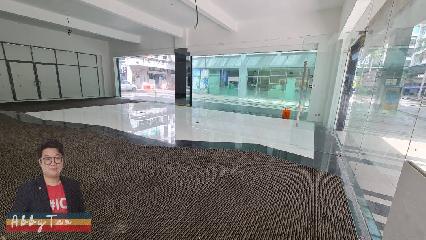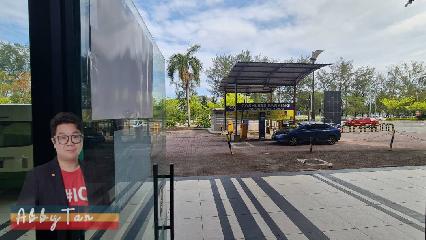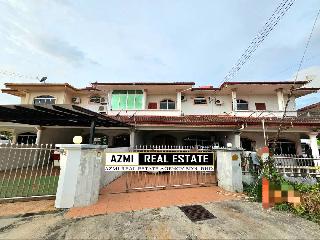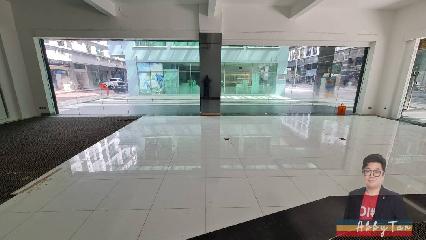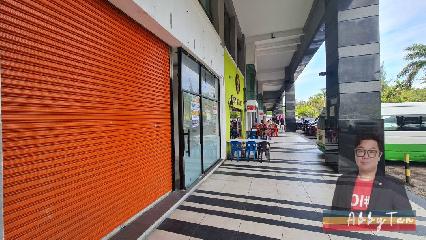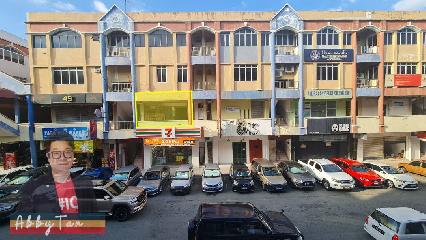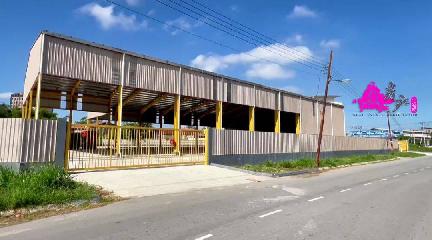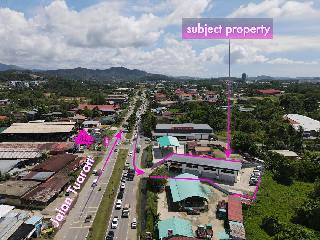A slide, a touch and a beep: such is the easydoings of electronic payments in today’s era of effortless payments.
Accelerating consumer’s migration to electronic payments (e-payments) in its move to realise cost savings and benefits has become a part of thw government’s agenda to increase the efficiency of the nation’s payment systems.
To underscore the importance of e-payments and to drive this agenda forward, Bank Negara Malaysia released its Financial Sector Blueprint 2011-2020, which charts the future direction of the financial system over the next ten years.
Electronic payments for greater economic efficiency is one of the nine focus areas under the Blueprint to drive Malaysia’s transition to a high value-added, high-income economy with adequate safeguards to preserve financial stability. The central bank is working towards accelerating the migration to electronic payments.
FOr Sarawak, plans are in place to hasten its digital economy with a targeted 17.4 per cent contribution to the state’s gross domestic product (GDP) by 2025.
Chief Minister Datuk Patinggi Abang Johari Tun Openg said that as a late starter, the state’s digital economy was only expected to contribute 2.3 per cent this year to the state’s GDP.
“Under the Sarawak digital economy strategy (2018-2022), we have established a number of new and transformational initiatives to drive the growth and development of the state’s digital economy.
“Among the initiatives, Sarawak has set up the Sarawak Multimedia Authority, Sarawak Digital Economy Corp and Development Bank of Sarawak to spearhead the state’s development of the digital economy. Sarawak will leverage on the establishment of the first digital free trade zone outside China in Malaysia,” he added when opening the inaugural Sarawak-China business forum here.
Last year, he announced a RM2bil state allocation to fund the state’s digital economy infrastructure and projects.
“There are also moves already toward cashless services where the Kuching International Airport (KIA) has collaborated with Malaysia Airport Holdings Bhd to standardise the use of VCash apps by Digi in all outlets in KIA.
“The increasing allocation for international flights landing at KIA calls out for the need for innovation and to turn cashless, equipped with a high-speed wireless network to support the usability of the e-wallet initiative,” said Johari.
Setting aside funding for development
In latest news, Sarawak is setting aside a big budget to upgrade its digital infrastructure to enable 4G services to be available in all parts of the state.
The Chief Minister in his acceptance speech after being conferred with honorary doctorate by Swinburne University of Technology in Melbourne this week said this is being done to fulfil the vision of industrialising Sarawak’s economy through digitalisation by 2030.
“When I took over the helm as Chief Minister in 2017, I had the conviction that Sarawak has to move away from conventional economy to one that is driven by digital technologies,” he highlighted. “We have to follow the rest of the world towards the digitalisation of our economy which presents vast opportunities for us beyond the shores of Sarawak.
“Sarawak has a population of about 2.8 million and this is not sufficient to support a strong domestic economy and we have to turn to the rest of Asia with a population of three billion as markets for our products.”
According to Abang Johari, Sarawak has all the potentials to transform its economy away from conventional into a digital economy with all the strength that the state has.
“Our political stability, our effort in earnest towards good public governance, our abundant natural resources, our vast renewable energy potentials and our strategic location at the centre of Asia are our strong points that we must capitalise on to transform the economy and upgrade the quality of life and living standard of our people.
“We know what we want to do for ourselves in Sarawak is a very tall order. We count ourselves fortunate that we have partners like Swinburne that is willing to help us in our effort to train and develop our human resource potential as part of our overall transformation plan,” he said.
Sarawak’s potential for a cashless society
The idea of a cashless society in Sarawak may seem far out when complete internet and cell phone coverage throughout the state is lacking, but if Estonia is anything to go by, it is achievable.
Starting from zero telephone connectivity in the 90s when it first became liberated from what was formerly the Soviet Union, it took Estonia 20 years to become a completely digitalised country in all except three things – birth, death and wedding registrations.
Estonia may have the advantage of geography and demographics, but Sarawak can still take a cue from this republic.
Furthermore, it is not the only state in Malaysia to incorporate digital economy – Selangor and Johor are also aiming to become smart cities while Sarawak aims to be the highest income-earning state in Malaysia by 2030 through digital innovations.
Sarawak’s topography and population distribution may remain a challenge to internet connectivity but it is a problem being addressed by Chief Minister Datuk Patinggi Abang Johari Tun Openg through efforts to implement and improve rural infrastructure, including RM1 bln dedicated to building digital infrastructure, the laying out of Sarawak Digital Economy Strategy and the creation of a regulatory body called Sarawak Multimedia Authority (SMA) among others.
With Digital Economy (DE) expected to contribute 25 per cent of the state GDP by 2025, it’s up to SMA to lay the foundations for the state’s digital economy which should be contributing RM3.3 billion amounting to 2.3 per cent of the state GDP in 2018.
Launched in December 2017 but fully operational in April 2018, SMA is a regulatory body whose primary objective includes spearheading, overseeing and facilitating the development and implementation of the communication, multimedia and the state’s digital economy initiatives.
According to SMA Digital Economy Policy, Planning and Monitoring Unit Admin Officer Carolineson Nosin during a Randau Digital Sarawak radio programme by SMA in collaboration with Angkatan Zaman Mansang (AZAM) Sarawak, several areas have already been identified for Phase 1 of their telco towers installation.
“SMA has already identified areas that are in need of improvement in terms of communication networks. For areas with no telecommunications access, transmitters will be developed. For areas with transmitters but weak coverage, they will be upgraded.
“Phase 1 will see 300 towers being set up before we move on to the next phase.”
Currently there are 1,532 towers installed across Sarawak.
Holistic efforts towards creating digital readiness are evident in ongoing awareness programmes under Digital Village and Digital Inclusivity which target rural areas, small and medium enterprises (SMEs) as well as collaborations with Ministry of Education, Science and Technological Research (MESTR) to building human capacity in ICT among students and children.
SMA’s part in laying down the foundation
SMA plays an advisory role to the state government in issues related to communication and multimedia activities to develop the digital economy. These include digital infrastructure, cyber security, capacity development, e-commerce, research and development in digital technology, innovations, technopreneurship, e-government as well as digital inclusivity.
MA is also responsible for the enforcement of laws and legislations under communication and multimedia as well as proposing amendments to existing laws.
“Advancements in ICT have touched almost every aspect of our daily lives; it has become a place where people communicate, ‘meet’ in cyberspace and carry out economic activities, producing an information society or knowledge-based society,” said Carolineson.
Once digital economy is fully implemented, SMA is confident that Sarawakians in both urban and rural settings will receive and have access to the full benefit of advancements made in agriculture, industry, tourism, commerce, health and social sectors which cover sports, arts and culture.
The Sarawak state government is also laying down an e-commerce ecosystem which consists of a duty free trade zone (DFTZ), and an e-warehouse in the works.
Where, why and how does Sarawak Pay come in?
BANK Negara Malaysia (BNM) in its Financial Sector Blueprint is also pushing to increase the number of per capita e-payment transactions over the next 10 years in its aggressive strategy to reduce cash transactions.
“The cashless lifestyle can provide many benefits which span across economic, monetary and social aspects besides maximising on quality, speed and efficiency of payment transactions,” explained SMA Digital Economy Policy, Planning and Monitoring Unit Admin Officer Shia Yang, who outlined that cashless services like Sarawak Pay can increase overall productivity in the financial sector because it saves time, cuts down on maintenance fees and costs, and can potentially reduce crime typically related to cash like counterfeiting.
“Vendors who incorporate Sarawak Pay in their transaction system can enjoy safer business transactions as they will cut out cash exchanges, physical transaction to and from the bank that will open them up to theft.”
Sarawak Pay is the first state government e-wallet licensed by BNM to help to complement the State’s digital economy’s initiatives such as the e-commerce and digital government sector.
In the State government perspective, cashless transaction could help the government to save to operate the payment collection counter at government agencies if everybody adopts the cashless lifestyle, just like in Estonia. In addition, bill printing costs can be saved and thus the State would have extra savings for the development projects.
SMA is also open to working with other e-wallet players who also setting the foot here after the Chief Minister set the direction of digital economy for Sarawak.
“We have no intention to ban or compete with other e-wallet vendors as our primary objective is to promote a cashless lifestyle,” said Shia Yang.
Other main challenges to seeing Sarawak Pay being taken up throughout Sarawak are consumer adoption, new technologies, concerns of security and existing acts and ordinances.
“Sarawak Pay is guaranteed by the government; if any money is stolen as a result of a loophole or a glitch in the app, the government will return the amount stolen to the victim,” Shia Yang clarified.
He added that to ensure safe and secure app transactions, Sarawak Pay undergoes regular penetration testing (Pentest) and adheres strictly to BNM’s rules and regulations.
Even though the use of Sarawak Pay is still limited to areas with internet connection SMA’s efforts to creating uniform connectivity across Sarawak remains high on its agenda as well as their optimism that Sarawak Pay and the cashless lifestyle will be a part of daily life in the state.
“To inculcate a cashless lifestyle culture, it is sometimes necessary to reach the mass market, and this is how we are doing it with Sarawak Pay.
“It’s the same as the past when all banks introduced internet banking, even now there are still doubts about internet banking.
“However, the majority, especially the younger generation, are already living with this digital convenience,” said Carolineson.
Malaysians still coming to grips with online payment
According to the latest statistics from BNM, electronic payments have been on the rise as consumers continue to adapt to online transactions.
This is seen in the rise of e-money transaction volumes to 1,861.7 million transactions in 2017 at total value of RM9.1 billion, from 1,663.2 million transactions in 2016 valued at RM7.7 million.
However, this is a stark contrast to, say, credit card transactions which recorded 406.5 million transactions but at a value of RM125.6 billion in 2017 — which is almost 14 times bigger than e-money’s transaction value.
In the next ten years, the Bank targets to increase the number of e-payment transactions per capita from 44 transactions to 200 transactions, and reduce cheques by more than half from 207 million to 100 million per year.
Measures to achieve this aim will include providing the right price signals to encourage the switch from paper-based payments to e-payments, and facilitating wider outreach of e-payments infrastructure, such as point-of-sale terminals and mobile phone banking.
At the moment, there are more than 40 authorised e-money issuers in Malaysia that are able to offer e-wallets, but in spite the large number of providers, Malaysia is still very dependent on cash.
Dubious on e-security
According to VMware Incorporated’s new VMware Banking Consumer 2020 Study, almost almost half of Malaysia consumers are dubious about the security of e-wallets and payment applications.
The numbers rise for connected devices, with 53 per cent doubting the security of smart devices with payment capabilities.
The study also found that Malaysia consumers prefer traditional payment methods, with majority (70 per cent) indicating that they trust online interbank transfers, ATMs or cash.
In contrast, consumers in Indonesia, the Philippines and Thailand are more open towards connected things and devices as new methods of payment.
Despite the skeptical outlook on newer payment modes such as apps and connected devices, Malaysia consumers have poor cyber hygiene habits, the study highlighted.
While 82 per cent of Malaysia consumers surveyed store their bank account details on at least one to six applications, only a quarter (25 per cent) practice good cybersecurity by using different passwords for all their accounts, which puts them, banks and financial institutions at greater risk of financial fraud and losses.
“Malaysia’s cashless adoption rate is ramping up, with e-payment transactions per capita doubling to 111 transactions per capita in 2017 and forecast to reach 200 transactions per capita in 2020, according to Bank Negara.
“In this context, banks and FSIs have a pressing need to boost their defenses in the face of consumer distrust towards newer payment methods and lax consumer cybersecurity practices,” said Sanjay K Deshmukh, vice president and managing director, Southeast Asia and Korea, VMware.
“To guard against risks in this new payment reality, banks and FSIs need a new network infrastructure to protect their apps, data and users across multiple cloud environments.”
In order to further secure online payment platforms, banks and FSIs continue to innovate to meet the shifting demands of mobile-first consumers.
Forward-thinking banks are already gaining traction with the introduction of biometric payment with at close to three quarters of consumers in Malaysia (71 per cent) placing high trust in the technology, alongside cash payment.
This article originally appeared on www.theborneopost.com

.jpeg)
.jpg)
_PH_Banner_(Desktop)(1200x180px).png)
.jpg)


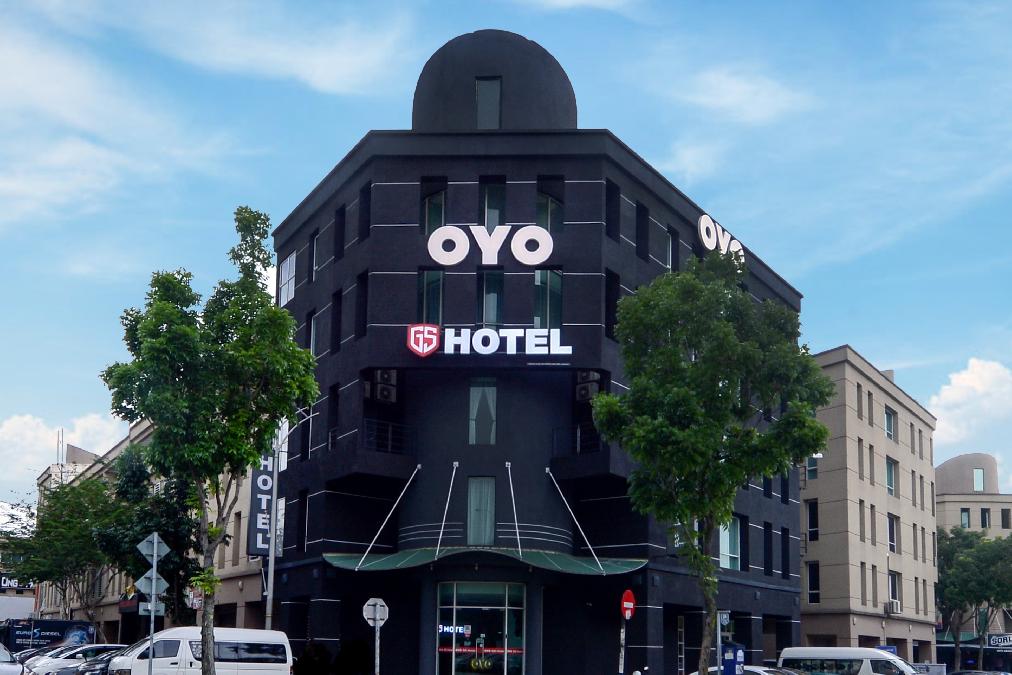



_(2).png)
.jpeg)
.jpg)


